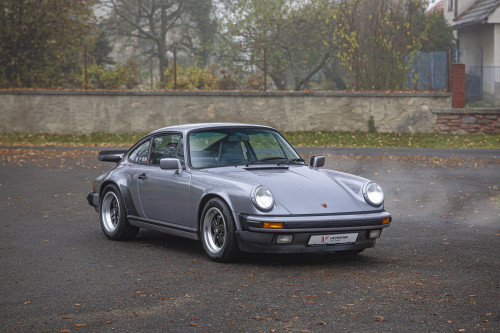The 1978 Toyota Supra (technically the Celica Supra) represented Toyota’s first foray into the performance sport compact market. Designed to compete with the Mazda RX-7 and Datsun 280Z, the Supra was built on a lengthened Celica chassis butiIt wasn’t until this second generation Supra bowed in 1982, that Toyota got serious about performance.
While the first generation Supra delivered 110-116 hp during its run, the second generation arrived with a 2.8-liter, fuel-injected, DOHC engine boasting 145-170 hp and a 0-60 time under 10 seconds. Buyers could choose between a five-speed manual or four-speed automatic transmission, and starting in 1983 the automatic was upgraded to a two-mode electronically controlled transmission featuring “normal” and “power” settings.
On the outside, the Supra looked like a modified Celica with more length in front of the firewall to accommodate the six-cylinder engine, and unique front end bodywork with pop-up headlights. The result was a handsome and sporty looking car in step with the angular styles of the era.
Perhaps better than the engine and the exterior was the Supra’s four-wheel independent suspension, tuned by Lotus. Mark II Toyota Supras were popular drivers’ cars and were often found in autocross competitions of the era. In addition, the Supra came with four-wheel disc brakes, power everything, standard cruise control, and tilt steering wheel.
Both P-type (for performance) and L-type (for luxury) Mark II Supras were available. P-type cars were equipped with limited slip differentials, fender flares, eight-way adjustable seats, larger wheels, and a rear spoiler. In 1985, both variants graduated to 15x6 wheels.
Toyota increased power for the Mark II Supra during each model year. The Supra Mark II line technically extended through the 1986 model year, but the final cars were really 1985 models.
The Mark II Toyota Celica Supra is recognized as a milestone in Japanese performance vehicles. The cars helped change America’s perception of Toyota as a manufacturer of econo-boxes, and attracted the attention of spirited drivers across the country. Today, enthusiasts tend to seek out the later P-type cars due to their higher power ratings and more purposeful set-up.
This car is in a very good condition with mostly original paint (ca. 90 % of original paint). The car was used by only one owner who documented each repair and exactly what happened to the car.
It does not require any financial contribution, it is ready to be driven.
Equipment:
- electronic display,
- sunroof,
- cruise control,
- period radio,
- sports steering wheel
- pneumatically adjustable driver's seat,
- full spoiler pack
The following elements were replaced in the car:
- front shock absorbers
- water cooler
- replacement of all fluids, oils, filters, sparkplugs and ignition cables
- temperature sensor
Additionally, an inspection of the braking system and suspension was performed. Rims have been professionally restored. The underbody has been cleaned and treated, it has not been repaired.
| Production date | 1985 |
|---|---|
| Body Type | Coupe |
| Engine | 2.759 ccm, 172 PS, I6 |
| transmission | Manual |
| Steering | Left Hand Drive |
|---|---|
| Layout | Rear Wheel Drive |
| Color - exterior | Silver |
| Color - interior | Gray / Black |
| Miles/Kilometers shown | 240.000 km |
|---|---|
| Chassis / VIN | JT1LBMA6100151505 |
| Location - Country | Poland |
| Location - City | Święcice |
2-door coupe body type; RWD (rear-wheel drive), manual 5-speed gearbox; gasoline (petrol) engine with displacement: 2759 cm3, advertised power: 127 kW / 170 hp / 172 PS, torque: 236 Nm; characteristic dimensions: outside length: 4660 mm, width: 1680 mm, wheelbase: 2610 mm; reference weights: base curb weight: 1235 kg; top speed: 210 km/h (131 mph); accelerations: 0-60 mph / 0-100 km/h under 10.0 s

Písek, Czechia

Jablonec nad Nisou, Czechia

Jablonec nad Nisou, Czechia

Písek, CZ

Písek, CZ

Písek, CZ